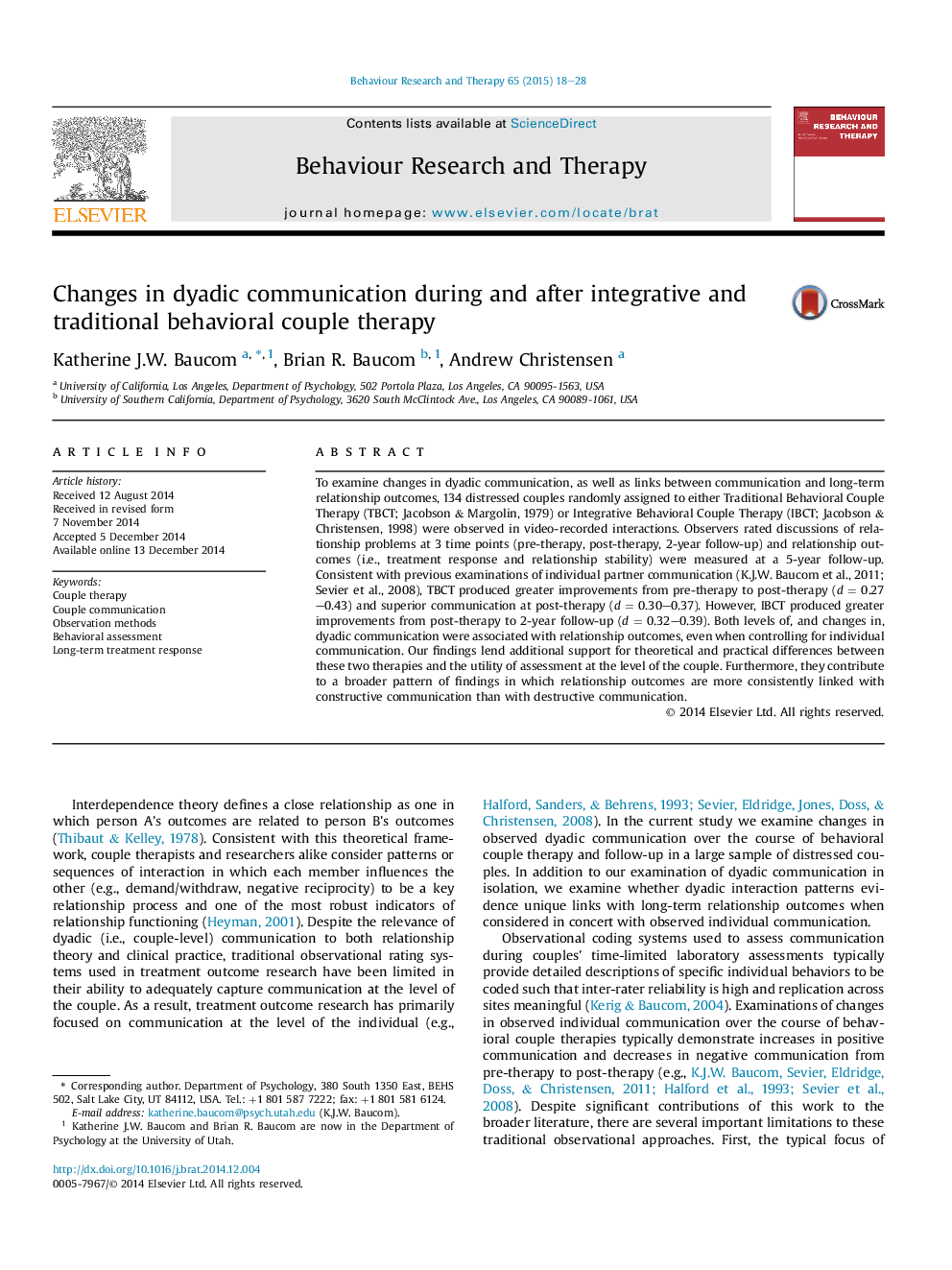| کد مقاله | کد نشریه | سال انتشار | مقاله انگلیسی | نسخه تمام متن |
|---|---|---|---|---|
| 901807 | 1472784 | 2015 | 11 صفحه PDF | دانلود رایگان |
• We examine changes in communication over 3 time points in behavioral couple therapy.
• Couple-level communication rated by naïve (untrained) raters.
• We examine communications' associations with 5-year relationship variables.
• Trajectories of change in communication depend on therapy type.
To examine changes in dyadic communication, as well as links between communication and long-term relationship outcomes, 134 distressed couples randomly assigned to either Traditional Behavioral Couple Therapy (TBCT; Jacobson & Margolin, 1979) or Integrative Behavioral Couple Therapy (IBCT; Jacobson & Christensen, 1998) were observed in video-recorded interactions. Observers rated discussions of relationship problems at 3 time points (pre-therapy, post-therapy, 2-year follow-up) and relationship outcomes (i.e., treatment response and relationship stability) were measured at a 5-year follow-up. Consistent with previous examinations of individual partner communication (K.J.W. Baucom et al., 2011; Sevier et al., 2008), TBCT produced greater improvements from pre-therapy to post-therapy (d = 0.27–0.43) and superior communication at post-therapy (d = 0.30–0.37). However, IBCT produced greater improvements from post-therapy to 2-year follow-up (d = 0.32–0.39). Both levels of, and changes in, dyadic communication were associated with relationship outcomes, even when controlling for individual communication. Our findings lend additional support for theoretical and practical differences between these two therapies and the utility of assessment at the level of the couple. Furthermore, they contribute to a broader pattern of findings in which relationship outcomes are more consistently linked with constructive communication than with destructive communication.
Journal: Behaviour Research and Therapy - Volume 65, February 2015, Pages 18–28
